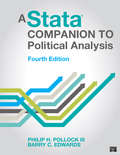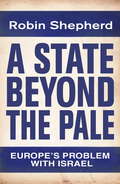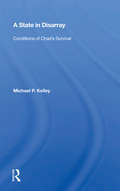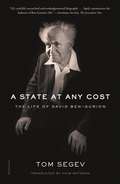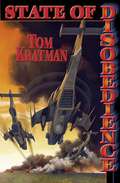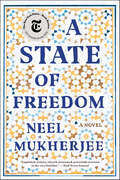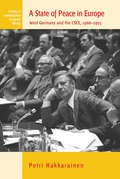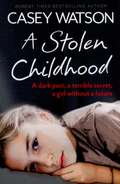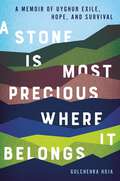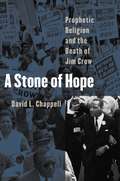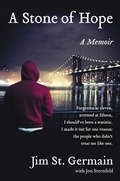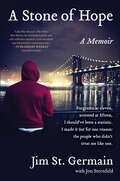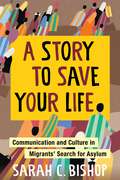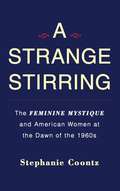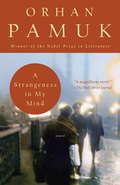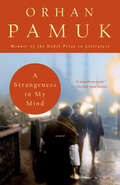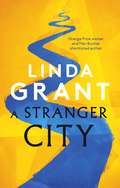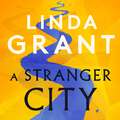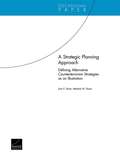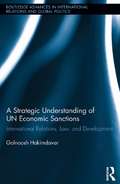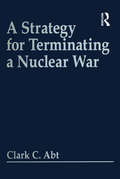- Table View
- List View
A Stata® Companion to Political Analysis
by Philip H. Pollock Professor Barry Clayton EdwardsPopular for its speed, flexibility, and attractive graphics, Stata is a powerful tool for political science students. With Philip Pollock's Fourth Edition of A Stata® Companion to Political Analysis, students quickly learn Stata via step-by-step instruction, more than 50 exercises, customized datasets, annotated screen shots, boxes that highlight Stata's special capabilities, and guidance on using Stata to read raw data. This attractive and value-priced workbook, an ideal complement to Pollock’s Essentials of Political Analysis, is a must-have for any political science student working with Stata.
A State Beyond the Pale: Europe's Problem With Israel
by Robin Shepherd'A State Beyond the Pale' looks at the roots of anti-Israeli sentiment in Europe.The Jewish state of Israel has now acquired the status of a pariah across much of the West and especially in Europe. For many, it has become the contemporary equivalent of apartheid South Africa - a system and a state with no legitimate place in the modern world. Israel's conflict with the Palestinians and the wider Muslim world also takes place across one of the great fault lines in global politics. No-one with a serious interest in international affairs can ignore it. But why have so many people and institutions of influence in Europe chosen to place themselves on the side of that fault line which opposes Israel? Where exactly does all this hostility come from? Can this really be put down to a revival of anti-Semitism on a continent which gave the world the Holocaust? 'A State Beyond the Pale: Europe's Problem with Israel' looks at the roots of anti-Israeli sentiment in Europe and shows why there is now a risk that it may even spread to the United States. In the author's view, the Israel-Palestine conflict can be seen as a test case for the West's ability to stand up for the values it claims as its own. In Europe, important institutions and individuals are now failing that test. This book explains why.
A State Beyond the Pale: Europe's Problem with Israel
by Robin Shepherd'A State Beyond the Pale' looks at the roots of anti-Israeli sentiment in Europe.The Jewish state of Israel has now acquired the status of a pariah across much of the West and especially in Europe. For many, it has become the contemporary equivalent of apartheid South Africa - a system and a state with no legitimate place in the modern world. Israel's conflict with the Palestinians and the wider Muslim world also takes place across one of the great fault lines in global politics. No-one with a serious interest in international affairs can ignore it. But why have so many people and institutions of influence in Europe chosen to place themselves on the side of that fault line which opposes Israel? Where exactly does all this hostility come from? Can this really be put down to a revival of anti-Semitism on a continent which gave the world the Holocaust? 'A State Beyond the Pale: Europe's Problem with Israel' looks at the roots of anti-Israeli sentiment in Europe and shows why there is now a risk that it may even spread to the United States. In the author's view, the Israel-Palestine conflict can be seen as a test case for the West's ability to stand up for the values it claims as its own. In Europe, important institutions and individuals are now failing that test. This book explains why.
A State In Disarray: Conditions Of Chad's Survival
by Michael P. KelleyAlthough independent since 1960, Chad has proved to be one of the least viable African states. Sustained politically and financially by other countries from the outset, Chad's internal warfare has made it the prey of external powers. Yet Chad has survived–an integral element of the Organization of African Unity's Pax Africana and of a peaceful trans-Saharan Africa. Its jeopardized survival is a shaky testimony to the continuing validity of the African continent's colonial-based states-system–underwritten by the OAU and the UN–and at the same time it provides a striking example of the cumulative effects of Africa's post-independence problems. Examining the state's internal weakness and the degree and nature of its foreign involvements, the author focuses on Chad's continuing dilemma: The outside support so crucial for viability is the very thing that undermines its international standing. The roles of Libya, France, the United States, the UN, the OAU, and the trans-Saharan regional subsystem are also analyzed as the author illuminates the quandary of supporting the state without aggravating its conflicts.
A State Is Born: The Establishment of the Israeli System of Government, 1947-1951
by Jonathan David FineAlthough Israel was not the only country that emerged during the postcolonial era following World War II, it was very different than others in the British Empire such as India, Iraq, Egypt, Kenya, and Nigeria. In A State Is Born, Jonathan David Fine uses newly discovered archival materials to reveal the complex challenges Israeli decision makers faced during the transition from British colonial rule in Palestine to Israeli sovereignty in the newly founded State of Israel. Including discussions of topics such as the Va'adat HaMatzav (special Committee for the transition period) and the formation of the ministries of Interior and Labor, Fine focuses on the planning policy and implementation behind the establishment of the Israeli governmental system during its most crucial formative period, 1947–1951, a dramatic transitory phase for both Jews and Arabs that continues to reverberate to this day.
A State at Any Cost: The Life of David Ben-Gurion
by Tom Segev2019 National Jewish Book Award Finalist"[A] fascinating biography . . . a masterly portrait of a titanic yet unfulfilled man . . . this is a gripping study of power, and the loneliness of power." —The Economist As the founder of Israel, David Ben-Gurion long ago secured his reputation as a leading figure of the twentieth century. Determined from an early age to create a Jewish state, he thereupon took control of the Zionist movement, declared Israel’s independence, and navigated his country through wars, controversies and remarkable achievements. And yet Ben-Gurion remains an enigma—he could be driven and imperious, or quizzical and confounding. In this definitive biography, Israel’s leading journalist-historian Tom Segev uses large amounts of previously unreleased archival material to give an original, nuanced account, transcending the myths and legends that have accreted around the man. Segev’s probing biography ranges from the villages of Poland to Manhattan libraries, London hotels, and the hills of Palestine, and shows us Ben-Gurion’s relentless activity across six decades. Along the way, Segev reveals for the first time Ben-Gurion’s secret negotiations with the British on the eve of Israel’s independence, his willingness to countenance the forced transfer of Arab neighbors, his relative indifference to Jerusalem, and his occasional “nutty moments”—from UFO sightings to plans for Israel to acquire territory in South America. Segev also reveals that Ben-Gurion first heard about the Holocaust from a Palestinian Arab acquaintance, and explores his tempestuous private life, including the testimony of four former lovers.The result is a full and startling portrait of a man who sought a state “at any cost”—at times through risk-taking, violence, and unpredictability, and at other times through compromise, moderation, and reason. Segev’s Ben-Gurion is neither a saint nor a villain but rather a historical actor who belongs in the company of Lenin or Churchill—a twentieth-century leader whose iron will and complex temperament left a complex and contentious legacy that we still reckon with today.
A State of Blood: The Inside Story of Idi Amin
by Henry KyembaA former cabinet minister in Uganda, who defected to London out of fear for his life, provides a gruesome account of Amin's regime which he asserts is a rule of terror.
A State of Disobedience
by Tom KratmanRottemeyer interrupted "All right then. Goals? I believe in power, Caroline. Since I was a helpless little girl and boys were mean to me I have believed in power . . . and sworn to get it. That's my goal. "And now I have it. And I will never let it go." After these eight years the party will run the country . . . and I will run the party. I will never give it up. Don't tell me you don't have ideals, Willi." "Ideals," mused the other. "Beliefs. I believe that you can make people better than they are. I believe that people are basically good until the system makes them bad. I believe that there is too much untrammeled economic power in the United States and the world. I believe that if someone has to have power, I can also use it more wisely, more benevolently, than anyone else I know." "Then why the police state, Willi? And why split it up the way you are planning?" "I'll split it up because I do not trust power that isn't in my hands. As long as there are fifty law enforcement agencies competing with and suspicious of each other then my power is safe. The police state? A lot of people are not going to like what I think I have to do. And I do not want them able to fight me on it. When President Rottemeyer's thugs burn out a catholic mission A chain of events begins which plunges the country in to a second civil war. The state of Texas faces the whole might of a bloated totalitarian federal police state. Governor Juanita Montoya, A Priest, a Prostitute, an Actor, and the good sense of the Texas and American people face a government where political correctness has run amuck. A fast reading political thriller and adventure novel, Tom Kratman has brought a nightmare to life, then showed us the kind of people who can face her.
A State of Freedom: A Novel
by Neel MukherjeeA New York Times Notable Book of 2018 A devastating novel of multiple narratives, “a mark of Neel Mukherjee’s range and force and ambition” (New York Times Book Review).A State of Freedom wrests open the central, defining events of our century: displacement and migration. Five characters, in very different circumstances—from a domestic cook in Mumbai to a vagrant and his dancing bear—find out the meanings of dislocation and the desire to get more out of life.
A State of Peace in Europe: West Germany and the CSCE, 1966-1975 (Contemporary European History #10)
by Petri HakkarainenFrom the mid-1960s to the mid-1970s West German foreign policy underwent substantial transformations: from bilateral to multilateral, from reactive to proactive. The Conference on Security and Cooperation in Europe (CSCE) was an ideal setting for this evolution, enabling the Federal Republic to take the lead early on in Western preparations for the conference and to play a decisive role in the actual East–West negotiations leading to the Helsinki Final Act of 1975. Based on extensive original research of recently released documents, spanning more than fifteen archives in eight countries, this study is a substantial contribution to scholarly discussions on the history of détente, the CSCE and West German foreign policy. The author stresses the importance of looking beyond the bipolarity of the Cold War decades and emphasizes the interconnectedness of European integration and European détente. He highlights the need to place the genesis of the CSCE conference in its historical context rather than looking at it through the prism of the events of 1989, and shows that the bilateral and multilateral elements (Ostpolitik and the CSCE) were parallel rather than successive phenomena, parts of the same complex process and in constant interaction with each other.
A Stolen Childhood
by Casey WatsonBestselling author and teacher Casey Watson shares the horrifying true story of Kiera Bentley, a 12-year-old girl with a deeply shocking secret she's too young to even understand. When Casey first meets Kiera, a small slight girl who's just lashed out at a fellow pupil in assembly, she immediately senses something's wrong. Something in Kiera's eyes alerts Casey that this is an "old head on young shoulders", and with Kiera's constant tiredness and self-soothing habit of pulling her hair out, she follows her instinct and takes Kiera under her wing. At first the answer seems simple enough; Kiera's parents aren't together and they don't get on, which makes life hard for Kiera as she's so close to her dad. But as the weeks roll on, Casey begins to understand that there's something much darker going on behind closed doors. And when she finally learns the truth, she's terrified she won't be able to save Kiera from it.
A Stone Is Most Precious Where it Belongs: A Memoir of Uyghur Exile, Hope, and Survival
by Gulchehra HojaNAMED A BEST BOOK OF THE YEAR 2023 BY THE NEW YORKERWOMEN'S NATIONAL BOOK ASSOCIATION 2023 Great Group Read This extraordinary memoir shares an insight into the lives of the Uyghurs, a people and culture being systematically destroyed by China—and a woman who gave up everything to help her people. In February 2018, twenty-four members of Gulchehra Hoja's family disappeared overnight. Her crime – and thus that of her family – was her award-winning investigations on the plight of her people, the Uyghurs, whose existence and culture is being systematically destroyed by the Chinese government.A Stone is Most Precious Where it Belongs is Gulchehra&’s stunning memoir, taking us into the everyday world of life under Chinese rule in East Turkestan (more formally known as the Xinjiang Autonomous Region of China), from her idyllic childhood to its modern nightmare. The grandchild of a renowned musician and the daughter of an esteemed archaeologist, Gulchehra grew up with her people&’s culture and history running through her veins. She showed her gifts early on as a dancer, actress, and storyteller, putting her on a path to success as a major television star. Slowly though, she began to understand what China was doing to her people, as well as her own complicity as a journalist. As her rising fame and growing political awakening coincided, she made it her mission to expose the crimes Beijing is committing in the far reaches of its nation, no matter the cost. Reveling in the beauty of East Turkestan and its people – its music, its culture, its heritage, and above all its emphasis on community and family – this groundbreaking memoir gives us a glimpse beyond what the Chinese state wants us to see, showcasing a woman who was willing to risk not just her own life, but also that of everyone she loves, to expose her people&’s story to the world.
A Stone of Hope
by David L. ChappellThe civil rights movement was arguably the most successful social movement in American history. In a provocative new assessment of its success, David Chappell argues that the story of civil rights is not a story of the ultimate triumph of liberal ideas after decades of gradual progress. Rather, it is a story of the power of religious tradition.Chappell reconsiders the intellectual roots of civil rights reform, showing how northern liberals' faith in the power of human reason to overcome prejudice was at odds with the movement's goal of immediate change. Even when liberals sincerely wanted change, they recognized that they could not necessarily inspire others to unite and fight for it. But the prophetic tradition of the Old Testament--sometimes translated into secular language--drove African American activists to unprecedented solidarity and self-sacrifice. Martin Luther King Jr., Fannie Lou Hamer, James Lawson, Modjeska Simkins, and other black leaders believed, as the Hebrew prophets believed, that they had to stand apart from society and instigate dramatic changes to force an unwilling world to abandon its sinful ways. Their impassioned campaign to stamp out "the sin of segregation" brought the vitality of a religious revival to their cause. Meanwhile, segregationists found little support within their white southern religious denominations. Although segregationists outvoted and outgunned black integrationists, the segregationists lost, Chappell concludes, largely because they did not have a religious commitment to their cause.In a provocative assessment of the success of the civil rights movement, David Chappell reconsiders the intellectual roots of civil rights reform, showing how the prophetic tradition of the Old Testament--sometimes translated into secular language--drove African American activists to unprecedented solidarity and self-sacrifice. Martin Luther King Jr., Fannie Lou Hamer, James Lawson, Modjeska Simkins, and other black leaders believed, as the Hebrew prophets believed, that they had to stand apart from society and instigate dramatic changes to force an unwilling world to abandon its sinful ways. Although segregationists outvoted and outgunned black integrationists, the segregationists lost, Chappell concludes, largely because they did not have a religious commitment to their cause.-->
A Stone of Hope: A Memoir
by Jon Sternfeld Jim St. GermainIn the tradition of The Other Wes Moore and Just Mercy, a searing memoir and clarion call to save our at-risk youth by a young black man who himself was a lost cause—until he landed in a rehabilitation program that saved his life and gave him purpose.Born into abject poverty in Haiti, young Jim St. Germain moved to Brooklyn’s Crown Heights, into an overcrowded apartment with his family. He quickly adapted to street life and began stealing, dealing drugs, and growing increasingly indifferent to despair and violence. By the time he was arrested for dealing crack cocaine, he had been handcuffed more than a dozen times. At the age of fifteen the walls of the system were closing around him.But instead of prison, St. Germain was placed in "Boys Town," a nonsecure detention facility designed for rehabilitation. Surrounded by mentors and positive male authority who enforced a system based on structure and privileges rather than intimidation and punishment, St. Germain slowly found his way, eventually getting his GED and graduating from college. Then he made the bravest decision of his life: to live, as an adult, in the projects where he had lost himself, and to work to reform the way the criminal justice system treats at-risk youth.A Stone of Hope is more than an incredible coming-of-age story; told with a degree of candor that requires the deepest courage, it is also a rallying cry. No one is who they are going to be—or capable of being—at sixteen. St. Germain is living proof of this. He contends that we must work to build a world in which we do not give up on a swath of the next generation.Passionate, eloquent, and timely, illustrated with photographs throughout, A Stone of Hope is an inspiring challenge for every American, and is certain to spark debate nationwide.
A Stone of Hope: A Memoir
by Jon Sternfeld Jim St. GermainIn the tradition of The Other Wes Moore and Just Mercy, a searing memoir and clarion call to save our at-risk youth by a young black man who himself was a lost cause—until he landed in a rehabilitation program that saved his life and gave him purpose.Born into abject poverty in Haiti, young Jim St. Germain moved to Brooklyn’s Crown Heights, into an overcrowded apartment with his family. He quickly adapted to street life and began stealing, dealing drugs, and growing increasingly indifferent to despair and violence. By the time he was arrested for dealing crack cocaine, he had been handcuffed more than a dozen times. At the age of fifteen the walls of the system were closing around him.But instead of prison, St. Germain was placed in "Boys Town," a nonsecure detention facility designed for rehabilitation. Surrounded by mentors and positive male authority who enforced a system based on structure and privileges rather than intimidation and punishment, St. Germain slowly found his way, eventually getting his GED and graduating from college. Then he made the bravest decision of his life: to live, as an adult, in the projects where he had lost himself, and to work to reform the way the criminal justice system treats at-risk youth.A Stone of Hope is more than an incredible coming-of-age story; told with a degree of candor that requires the deepest courage, it is also a rallying cry. No one is who they are going to be—or capable of being—at sixteen. St. Germain is living proof of this. He contends that we must work to build a world in which we do not give up on a swath of the next generation.Passionate, eloquent, and timely, illustrated with photographs throughout, A Stone of Hope is an inspiring challenge for every American, and is certain to spark debate nationwide.
A Story to Save Your Life: Communication and Culture in Migrants' Search for Asylum
by Sarah BishopA young woman flees violence in Mexico and seeks protection in the United States—only to be trafficked as a domestic worker in the Bronx. A decorated immigration judge leaves his post when the policies he proudly upheld capsize in the wake of political turmoil. A Gambian translator who was granted asylum herself talks with other African women about how immigration officers expect victims of torture to behave. A border patrol officer begins to question the training that instructs him to treat the children he finds in the Arizona desert like criminals.Through these and other powerful firsthand accounts, A Story to Save Your Life offers new insight into the harrowing realities of seeking protection in the United States. Sarah C. Bishop argues that cultural differences in communication shape every stage of the asylum process, playing a major but unexamined role. Migrants fleeing persecution must reconstruct the details of their lives so governmental authorities can determine whether their experiences justify protection. However, Bishop shows, many factors influence whether an applicant is perceived as credible, from the effects of trauma on the ability to recount an experience chronologically to culturally rooted nonverbal behaviors and displays of emotion. For asylum seekers, harnessing the power of autobiographical storytelling can mean the difference between life and death. A Story to Save Your Life emphasizes how memory, communication, and culture intertwine in migrants’ search for safety.
A Strange Stirring: The Feminine Mystique and American Women at the Dawn of the 1960s
by Stephanie CoontzIn 1963, Betty Friedan unleashed a storm of controversy with her bestselling book, The Feminine Mystique. Hundreds of women wrote to her to say that the book had transformed, even saved, their lives. Nearly half a century later, many women still recall where they were when they first read it. In A Strange Stirring, historian Stephanie Coontz examines the dawn of the 1960s, when the sexual revolution had barely begun, newspapers advertised for "perky, attractive gal typists," but married women were told to stay home, and husbands controlled almost every aspect of family life. Based on exhaustive research and interviews, and challenging both conservative and liberal myths about Friedan, A Strange Stirring brilliantly illuminates how a generation of women came to realize that their dissatisfaction with domestic life didn't reflect their personal weakness but rather a social and political injustice.
A Strangeness in My Mind
by Orhan PamukFrom one of our greatest, a panoramic new novel, his first since Museum of Innocence, bringing us into Istanbul's underground through the eyes of a struggling street vendor. Mevlut, an Istanbul street vendor, has spent his whole life selling a local alcoholic drink. It is the 1990s, and although there were once thousands of boza vendors walking the frozen streets of the city, Mevlut now cuts a lonely figure on snowy winter nights. Falling deeply into debt, and desperate to marry off his incompetent son and satisfy his mistress, Mevlut turns to his old friend Ferhat, who collects payments on electric bills. The partners traverse the back streets of middle class neighbourhoods and shantytowns, venture into flats, shops and restaurants of the poor, relishing their power to punish cheaters and collect bribes. The dangers of Instanbul's underbelly eventually catch up with Mevlut, and he is attacked by a pack of dogs, hospitalized, robbed by bandits and beaten and threatened at every turn. Istanbul is exposed as a city with a rich and dynamic underground culture which seeps into its secular business centres and mainstream society. Mevlut serves as a flighty guide, occasionally attuned to the city's nuances, but with a wild imagination and insticts tainted by desperation.
A Strangeness in my Mind: A novel (Vintage International)
by Orhan Pamuk Ekin OklapFrom the Nobel Prize winner and best-selling author of Snow and My Name Is Red: a soaring, panoramic new novel—his first since The Museum of Innocence—telling the unforgettable tale of an Istanbul street vendor and the love of his life. Since his boyhood in a poor village in Central Anatolia, Mevlut Karataş has fantasized about what his life would become. Not getting as far in school as he’d hoped, at the age of twelve he comes to Istanbul—“the center of the world”—and is immediately enthralled by both the old city that is disappearing and the new one that is fast being built. He follows his father’s trade, selling boza (a traditional mildly alcoholic Turkish drink) on the street, and hoping to become rich, like other villagers who have settled the desolate hills outside the booming metropolis. But luck never seems to be on Mevlut’s side. As he watches his relations settle down and make their fortunes, he spends three years writing love letters to a girl he saw just once at a wedding, only to elope by mistake with her sister. And though he grows to cherish his wife and the family they have, he stumbles toward middle age in a series of jobs leading nowhere. His sense of missing something leads him sometimes to the politics of his friends and intermittently to the teachings of a charismatic religious guide. But every evening, without fail, Mevlut still wanders the streets of Istanbul, selling boza and wondering at the “strangeness” in his mind, the sensation that makes him feel different from everyone else, until fortune conspires once more to let him understand at last what it is he has always yearned for.Told from different perspectives by a host of beguiling characters, A Strangeness in My Mind is a modern epic of coming of age in a great city, a brilliant tableau of life among the newcomers who have changed the face of Istanbul over the past fifty years. Here is a mesmerizing story of human longing, sure to take its place among Pamuk’s finest achievements.
A Stranger City
by Linda GrantWINNER OF THE WINGATE LITERARY PRIZE 2020 `A superb piece of writing about London life. Past Wingate winners include Zadie Smith, Amos Oz and David Grossman' '[A] shimmering new novel . . . Grant's book is as much a love letter to London as a lament, an ode to pink skin after sunny days and lost gloves waving from railings' The Economist'A compelling portrait of contemporary London, it's a novel fit for shifting, uncertain times' Suzi Feay, Financial Times'A Stranger City feels like a very important novel for right now: no politically ponderous diatribe but a witty, sunlounger-accessible and deeply humanising story about people - about us - and the societal shipwreck we're stuck in' Evening StandardWhen a dead body is found in the Thames, caught in the chains of HMS Belfast, it begins a search for a missing woman and confirms a sense that in London a person can become invisible once outside their community - and that assumes they even have a community. A policeman, a documentary film-maker and an Irish nurse named Chrissie all respond to the death of the unknown woman in their own ways. London is a place of random meetings, shifting relationships - and some, like Chrissie intersect with many. The film-maker and the policeman meanwhile have safe homes with wives - or do they? An immigrant family speaks their own language only privately; they have managed to integrate - or have they? The wonderful Linda Grant weaves a tale around ideas of home; how London can be a place of exile or expulsion, how home can be a physical place or an idea. How all our lives intersect and how coincidence or the randomness of birth place can decide how we live and with whom.
A Stranger City
by Linda GrantWINNER OF THE WINGATE LITERARY PRIZE 2020 `A superb piece of writing about London life. Past Wingate winners include Zadie Smith, Amos Oz and David Grossman' '[A] shimmering new novel . . . Grant's book is as much a love letter to London as a lament, an ode to pink skin after sunny days and lost gloves waving from railings' The Economist'A compelling portrait of contemporary London, it's a novel fit for shifting, uncertain times' Suzi Feay, Financial Times'A Stranger City feels like a very important novel for right now: no politically ponderous diatribe but a witty, sunlounger-accessible and deeply humanising story about people - about us - and the societal shipwreck we're stuck in' Evening StandardWhen a dead body is found in the Thames, caught in the chains of HMS Belfast, it begins a search for a missing woman and confirms a sense that in London a person can become invisible once outside their community - and that assumes they even have a community. A policeman, a documentary film-maker and an Irish nurse named Chrissie all respond to the death of the unknown woman in their own ways. London is a place of random meetings, shifting relationships - and some, like Chrissie intersect with many. The film-maker and the policeman meanwhile have safe homes with wives - or do they? An immigrant family speaks their own language only privately; they have managed to integrate - or have they? The wonderful Linda Grant weaves a tale around ideas of home; how London can be a place of exile or expulsion, how home can be a physical place or an idea. How all our lives intersect and how coincidence or the randomness of birth place can decide how we live and with whom.
A Strategic Planning Approach
by Lynn E. Davis Melanie W. SissonWhile the United States government has historically undertaken strategic reviews and produced numerous strategy documents, these have provided only very general directions for U.S. policymakers. This paper defines an approach to strategic planning and illustrates its application using the example of the critical national security topic of counterterrorism.
A Strategic Understanding of UN Economic Sanctions: International Relations, Law and Development (Routledge Advances in International Relations and Global Politics)
by Golnoosh HakimdavarEconomic Sanctions are increasingly used as a legal, non-military technique of combating abusers of international peace. However it remains unclear how the success or failure of these sanctions is measured. This book examines the seldom-explored United Nations’ economic sanctions deliberation process and exposes systematic problems in the measurement of the success or failure of these sanctions. Centering on the key concepts of "peace and security," the author brings the reader’s attention to the discrepancies that exist in the process of decision-making, implementation, and evaluation of UN imposed economic sanctions. She engages international law and development methods to provide proof for the lack of consensus in measures of success and failure, which in turn suggests that sanction implementation on a uniform domestic front are unattainable. This thorough analysis concludes with suggestions for improving the sanctions process, only to clear the path for negating them as a whole and suggest alternative non-coercive measures for mitigating conflict situations and threats to peace and security.
A Strategic Vision: For Department Of Energy Environmental Quality Research And Development
by National Research CouncilThe National Academies Press (NAP)--publisher for the National Academies--publishes more than 200 books a year offering the most authoritative views, definitive information, and groundbreaking recommendations on a wide range of topics in science, engineering, and health. Our books are unique in that they are authored by the nation's leading experts in every scientific field.
A Strategy For Terminating A Nuclear War
by Clark C AbtAvoiding a nuclear war, or ending one if avoidance fails, is an important but relatively unexplored aspect of nuclear doctrine. Dr. Abt examines the feasibility of antagonists' agreeing to exclude their open cities from nuclear targeting and to replace strategic bombardment with retaliatory invasion to create less of a hair[1]trigger deterrent. Critical net assessments by U.S. strategists and the effects of such a strategy on the Soviet Union and on U.S. allies are considered, along with problems implementation might pose. The author contends that both deterrence and the potential for limiting damage are strengthened by pre-war plans for a nuclear ceasefire and stalemate short of holocaust.
